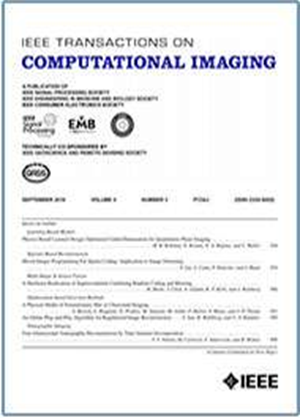High Spatio-Temporal Imaging Reconstruction for Hybrid Spike-RGB Cameras
IF 4.2
2区 计算机科学
Q2 ENGINEERING, ELECTRICAL & ELECTRONIC
引用次数: 0
Abstract
The acquisition of high-resolution image sequence for dynamic scenes of fast motion remains challenging due to motion blur caused by fast object movement. As a novel neuromorphic sensor, spike camera records the changing light intensity via spike stream of ultra-high temporal resolution, excelling in motion recording but limited in spatial resolution. This paper proposes a method for high spatio-temporal resolution (HSTR) imaging with a hybrid Spike-RGB camera, utilizing the information from spike stream to enhance the temporal resolution and the information from RGB images to enhance the spatial resolution of texture details. For this purpose, we present HSTR-Net, a dedicated network to process the spike and RGB data, which incorporates three key innovations: 1) A temporal control encoder enabling flexible temporal reconstruction through spike stream processing with embedded time parameters, eliminating the requirement to train multiple inference models; 2) Motion-aware feature projection that aligns RGB frame details to target timestamps using spike-derived motion offsets; 3) An adaptive transformer-based fusion strategy establishing cross-modal spatial correlations through mutual attention mechanisms. Extensive experiments demonstrate state-of-the-art performance on synthetic benchmark datasets with 5.23 dB PSNR and 6.94% SSIM improvement. It also shows visually impressive performance on real-world captured spike dataset.混合尖峰- rgb相机的高时空成像重建
快速运动动态场景的高分辨率图像序列的获取仍然具有挑战性,因为快速物体运动导致运动模糊。作为一种新型的神经形态传感器,脉冲相机通过超高时间分辨率的脉冲流记录光强的变化,具有运动记录的优势,但空间分辨率有限。本文提出了一种利用尖峰流信息增强时间分辨率,利用RGB图像信息增强纹理细节空间分辨率的高时空分辨率(HSTR)混合成像方法。为此,我们提出了HSTR-Net,一个处理尖峰和RGB数据的专用网络,它包含三个关键创新:1)一个时间控制编码器,通过嵌入时间参数的尖峰流处理实现灵活的时间重建,消除了训练多个推理模型的需要;2)运动感知特征投影,使用峰值衍生的运动偏移将RGB帧细节与目标时间戳对齐;3)基于自适应变压器的融合策略,通过相互关注机制建立跨模态空间相关性。大量的实验表明,在合成基准数据集上的性能达到了5.23 dB的PSNR和6.94%的SSIM改进。它还在实际捕获的峰值数据集上显示了令人印象深刻的视觉性能。
本文章由计算机程序翻译,如有差异,请以英文原文为准。
求助全文
约1分钟内获得全文
求助全文
来源期刊

IEEE Transactions on Computational Imaging
Mathematics-Computational Mathematics
CiteScore
8.20
自引率
7.40%
发文量
59
期刊介绍:
The IEEE Transactions on Computational Imaging will publish articles where computation plays an integral role in the image formation process. Papers will cover all areas of computational imaging ranging from fundamental theoretical methods to the latest innovative computational imaging system designs. Topics of interest will include advanced algorithms and mathematical techniques, model-based data inversion, methods for image and signal recovery from sparse and incomplete data, techniques for non-traditional sensing of image data, methods for dynamic information acquisition and extraction from imaging sensors, software and hardware for efficient computation in imaging systems, and highly novel imaging system design.
 求助内容:
求助内容: 应助结果提醒方式:
应助结果提醒方式:


